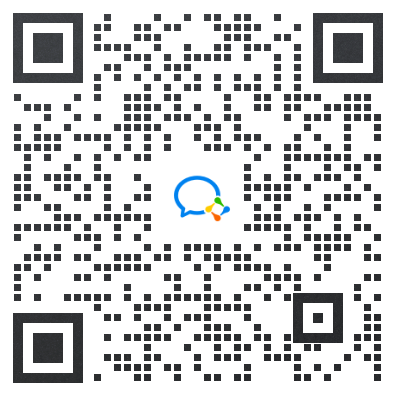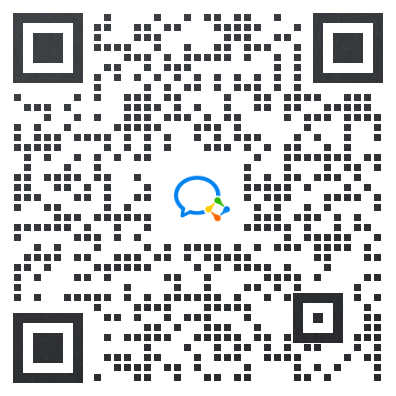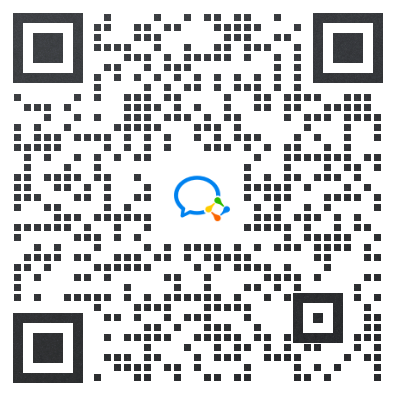为了方便同学们的学习,为大家整理了新概念英语第四册学习手册,新概念英语作为一套世界闻名的英语教程,以其全新的教学理念,有趣的课文内容和全面的技能训练,深受广大英语学习者的欢迎和喜爱。希望以下内容能够为大家的新概念英语学习提供帮助!
Lesson40:Waves
Waves are the children of the struggle between ocean and atmosphere, the ongoing signatures of infinity. Raysfrom the sun excite and energize the atmosphere of the earth, awakening it to flow, to movement, to rhythm, tolife. The wind then speaks the message of the sun to the sea and the sea transmits it on through waves – and ancient, exquisite, powerful message.These ocean waves are among the earth’s most complicated natural phenomena. The basic features include a crest ( the highest point of the wave), a trough (the lowest point), a height (the vertical distance fromthe trough to the crest), a wave length (the horizontal distance between two wave crests), and a period(which is the time it takes a wave crest to travel one wave length).Although an ocean wave gives the impression of a wall of water moving in your direction, in actuality waves move through the water leaving the water about where it was. If the water was moving with the wave,the ocean and everything on it would be racing in to the shore with obviously catastrophic results. An ocean wave passing through deep water causes a particle on the surface to move in a roughly circular orbit, drawing the particle first towards the advancing wave, then up into the wave, then forward with it and then – as the wave leaves the particles behind – back to its starting point again.From both maturity to death, a wave is subject to the same laws as any other ‘living’ thing. For a time it assumes a miraculous individuality that, in the end, is reabsorbed into the great ocean of life. The undulating waves of the open sea are generated by three natural causes: wind, earth movements of tremors, and the gravitational pull of the moon and the sun. Once waves have bean generated, gravity is the force that drives them in a continual attempt to restore the ocean surface to a flat plain.
New words and expressions 生词和短语
signature
n. 签名,标记
infinity
n. 无穷
ray
n. 光线
energize
v. 给与...能量
rhythm
n. 节奏
transmit
v. 传送
exquisite
adj. 高雅的
phenomena
n. 现象
crest
n. 浪峰
trough
n. 波谷
vertical
adj. 垂直的
horizontal
adj. 水平的
actuality
n. 现实
catastrophic
adj. 大灾难的
particle
n. 微粒
maturity
n. 成熟
undulate
v. 波动,形成波浪
tremor
n. 震颤
gravitational
adj. 地心吸力的
参考译文
海浪是大海和空气相斗的产物,无限的一种不间断的标志。太阳光刺激了地球的大气层,并给予它能量;阳光使空气开始流动,产生节奏,获得生命。然后,风把太阳的住处带给了大海,海洋用波浪的形式传递这个信息 -- 一个源过流长、高雅而有力的信息。
这些海浪属于地球上最复杂的自然现象。它们的基本特征包括浪峰(波浪的点)、波谷(最低点)、浪高(从波谷到浪峰的垂直距离)、波长(两个浪峰间的水平距离)和周期(海峰走过一个波长所需的时间)。虽然,海浪给人的印象是一堵由水组成的墙向你压过来,而实际上,浪从水中移过,而水则留在原处。如果水和浪一起移动的话,那么大海和海里所有的东西就会向岸边疾涌过来,带来明显的灾难性后果。
穿过深水的海浪使水面上的一个微粒按照一种近乎圆形的轨道移动,先把微粒拉向前移动的海浪,然后推上波浪,随着波浪移动,然后 -- 当波浪把微粒留在身后时 -- 又回到出发点。
从成熟到消亡,波浪和其他任何“活动中”的东西一样,都受制于共同的法则。一度它获得非凡的个性,但最终又被重新融进生命的大洋。
公海上起伏的波浪是由3个自然因素构成的:风、地球的运动或震颤和月亮、太阳的引力。一旦波浪形成,地球引力是持续不断企图使海面复原为平面的力量。
Lesson 41
Training elephants
训练大象
First listen and then answer the following question.
听录音,然后回答以下问题。
At what point does the training of a captive wild elephant begin?
Two main techniques have been used for training elephants, which we may respectively the tough and the gentle. The former method simply consists of setting an elephant to work and beating him until he does what is expected of him. Apart from moral considerations this is a stupid method of training, for it produces a resentful animal who at a later stage may well turn man-killer. The gentle method requires more patience in the early stages, but produces a cheerful, good-tempered elephant who will give many years of loyal service.
The first essential in elephant training is to assign to the animal a single mahout who will be entirely responsible for the job. Elephants like to have one master just as dogs do, and are capable of a considerable degree of personal affection. There are even stories of half-trained elephant calves who have refused to feed and pined to death when by some unavoidable circumstance they have been deprived of their own trainer. Such extreme cases must probably be taken with a grain of salt, but they do underline the general principle that the relationship between elephant and mahout is the key to successful training.
The most economical age to capture an elephant for training is between fifteen and twenty years, for it is then almost ready to undertake heavy work and can begin to earn its keep straight away. But animals of this age do not easily become subservient to man, and a very time man, and a very firm hand must be employed in the early stages. The captive elephant, still roped to a tree, plunges and screams every time a man approaches, and for several days will probably refuse all food through anger and fear. Sometimes a tame elephant is tethered nearby to give the wild one confidence, and in most cases the captive gradually quietens down and begins to accept its food. The next stage is to get the elephant to the training establishment, a ticklish business which is achieved with the aid of two tame elephants roped to the captive on either side.
When several elephants are being trained at one time, it is customary for the new arrival to be placed between the stalls of two captives whose training is already well advanced. It is then left completely undisturbed with plenty of food and water so that it can absorb the atmosphere of its new home and see that nothing particularly alarming is happening to its companions. When it is eating normally, its own training begins. The trainer stands in front of the elephant holding a long stick with a sharp metal point. Two assistants, mounted on tame elephants, control the captive from either side, while others rub their hands over his skin to the accompaniment of a monotonous and soothing chant. This is supposed to induce pleasurable sensations in the elephant, and its effects are reinforced by the use of endearing epithets. The elephant is not son', or 'ho! my father', or 'my mother', according to the age and sex of the captive. The elephant is not immediately susceptible to such blandishments, however, and usually lashes fiercely with its trunk in all directions. These movements are controlled by the trainer with the metal-pointed stick, and the trunk eventually becomes so sore that the elephant curls it up and seldom afterwards uses it for offensive purposes.
RICHARD CARRINGTON Elephants
New words and expressions 生词和短语
technique
n. 技术
tough
adj. 强硬的
resentful
adj. 忿恨不满的
assign
v. 分配,指派
mahout
n. 驯象人
calf
n. 幼仔
pine
v. 消瘦
underline
v. 着重说明,强调
keep
n. 生计
subservient
adj. 屈从的
plunge
v. 向前冲
tame
adj. 养驯服了的
tether
v. (用绳)拴
ticklish
adj. 难对付的,棘手的
alarming
adj. 引起惊恐的
accompaniment
n. 伴奏
soothe
v. 镇定
chant
n. 单调的歌
reinforce
v. 加强
endearing
adj.惹人喜爱的
epithet
n. 称呼
susceptible
adj. 易受感动的
blandishment
n. 奉承
lash
v. 猛烈地甩
curl
v. 使卷曲
参考译文
驯象有两种主要的方法,我们分别称之为强硬法和温柔法。强硬法就是驱象去干活,把它打顺从为止。且不说道义问题,这本身就是一种愚蠢的训练方法,因为这种方法训练会使动物反感,在以后某个时期可能会变成伤人的动物。温柔法要求在最初阶段保持较大的耐心,但这种方法可以训练出性情愉快、脾气温顺,能忠实为人服务多年的大象。
驯象中至关生要的是指派一名专门的驯象员,全面负责这项工作。大象和狗一样,喜欢有一个专一的主人,而且会对主人产生相当深厚的私人感情。甚至有这样的故事:训练了一半的小象,由于不可避免的情况与他们的主人分离后,竟拒绝吃食,消瘦至死。这种极端的事例虽不可全信,但强调了一项基本原则,象和驯象员之间的关系是驯象成功与否的关健。
捕捉15至20岁之间年龄的大象进行驯象最为经济。 这个年龄的象差不多已能干重活,可以很快挣回饲养它的开支。但这个年龄的象不易驯服,因此开始阶段需要有一位强有力的老手。捕来拴在树上的大象,每当有人走近它时,就会向前猛冲并发出尖叫,甚至一连几于都由于愤怒和恐惧而拒绝进食。有时,把一头已驯服的象拴在旁边能给野象以信心。在大多数情况下,刚博来的象会慢慢静下来,接着开始吃食。下一步就是把象带到训练场所,这是一件棘手的事,需要在它两侧拴上两头驯服的大象才能完成。
几只象同时训练时,通常是把新到的安置在两头训练得很好的大象的象厩中间,然后给它以充足的食物和水,一定不要惊扰它,以便让他能适应新居的气氛,并且看到自己的同伴身上没有发生让自己担惊受怕的事。当它进食正常了,训练就开始。驯练员手持一根有锋利金属尖头的长棒,站在象前。两位助手骑在驯服的象的背上,从两侧控制新捕的象,其他人唱着单调的歌声用手抚摸象的皮肤。据说这是为了使象产生愉快的感觉,为了加强这种效果,人闪还按象的年龄性别,给以亲切的外号,如“嗬!我的孩子”、“嗬!我的爸爸”、“嗬!我的妈妈”。然而大象不会立刻被这些讨好的括感动,而往往是用鼻子朝各个方向猛烈地甩动。训练员要用有锋利金属尖的长棒控制它的这种举动,象鼻子最后疼得卷了起来,以后它就很少用鼻子去进攻了。
42.Recording an earthquake
记录地震
First listen and then answer the following question.
听录音,然后回答以下问题。
What does a pen have to do to record on paper the vibrations generated by an earthquake?
An earthquake comes like a thief in the night, without warning. It was necessary, therefore, to invent instruments that neither slumbered nor slept. Some devices were quite simple. One, for instance, consisted of rods of various lengths and thicknesses with would stand up end like ninepins. When a shock came, it shook the rigid table upon which these stood. If it were gentle, only the more unstable rods fell. If it were severe, they all fell. Thus the rods, by falling, and by the direction in which they fell, recorded for the severe, they all fell. Thus the rods, by falling, and by the direction in which they fell, recorded for the slumbering scientist the strength of a shock that was too weak to waken him, and the direction from which it came.
But instruments far more deliecate than that were needed if any really serious advance was to be made. The ideal to be aimed at was to devise an instrument that could record with a pen on paper, the movements of the ground or of the table as the quake passed by. While I write my pen moves, but the paper keeps still. With practice, no doubt, I could in time learn to write by holding the pen still while the paper moved. That sounds a silly suggestion, but that was precisely the idea adopted in some of the early instruments (seismometers) for recording earthquake waves. But when table, penholder and paper are all moving, how is it possible to write legibly? The key to a solution of that problem lay in an everyday observation. Why does a person standing in a bus or train tend to fall when a sudden start is made? It is because his feet move on , but his head stays still. A simple experiment will help us a little further. Tie a heavy weight at the end of a long piece of string. With the hand to and fro and around but not up and string so that the weight nearly touches the ground. Now move the hand to and fro and around but not up and down. It will be found that the weight a piece of string. With the hand held high in the air, hold the string so that the weight nearly touches the ground. Now move the hand to and fro and around but not up and down. It will be found that ten weight moves but slightly or not at all. Imagine an earthquake shock shaking the floor, the paper, you and your hand. In the midst of all this movement, the weight and the pen would be still. But as the paper moved from side to side under the pen point, its movement would be recorded in ink upon its surface. It was upon this principle that the first instruments were made, but while the drum was being shaken, the line that the pen was drawing wriggled from side to side. The apparatus thus described, however, records only the horizontal component of the wave movement, which is, in fact, much more complicated. If we could actually see the path described by a particle, such as a sand grain in the rock, it would be more like that of a bluebottle path described by a particle, such as a sand grain in the rock, it would be more like that of a bluebottle buzzing round the room; it would be up and down, to and fro and from side to side. Instruments have been devised and can be so placed that all three elements can be recorded in different graphs.
When the instrument is situated at more than 700 miles from the earthquake centre, the graphic record shows three waves arriving one after at short intervals. The first records the arrival of longitudinal vibrations. The second marks the arrival of transverse vibrations which travel more slowly and arrive several minutes after the first. These two have travelled through the earth. It was from the study of these that so much was learnt about the interior of the earth. The third, or main. The third, or main wave, is the slowest and has travelled round the earth through the surface rocks.
H.H,SWINNERTON The Earth beneath Us
New words and expressions 生词和短语
earthquake
n. 地震
slumber
v. 睡眠
ninepin
n. 九柱戏中的木柱
rigid
adj. 坚硬的
delicate
adj. 灵感的
seismometer
n. 地震仪
penholder
n. 笔杆
legibly
adv. 字迹清楚地
drum
n. 鼓状物
wriggle
v. 扭动
bluebottle
n. 绿头苍蝇
graph
n. 图表
graphic
adj. 图示的
longitudinal
adj. 纵向的
transverse
adj. 横向的
参考译文
地震就像夜间的小偷,不打招呼就来了。因此,有必要发明一种仪器,既不打盹儿,也不睡觉。有些装置非常简单。例如,有一种装置是由一些长短、粗细不同的木棒组成,就像九柱戏的木棒一样坚立着,一旦有地震,就会震动竖立在坚硬的桌上的木棒。如果地震轻微,只有不稳定的木棒倒下;如果地震剧烈,所有的木棒都会例下。由于地震太弱而未惊醒科学家时,木棒倒下的多少和倒下的方向就为科学家记录下了地震的强度和地震方向。
但是,如果要取得真正重大的进展,需要有比这种装置精细得多的仪器。理想的目标是设计出这样一种仪器:当地震发生时,它能用笔在纸上记录下大地和桌子运动情况。我写字时,笔是移动的,纸是静止的。毫无疑问,经过练习,我最终能够学会笔不动而纸动来写字。这听起来似乎是一种愚蠢的想法,但是早期记录地震波的仪器(地震仪)正是采用了这中思路。可是,当桌子、夹笔装置、纸都在移动时,怎么能书写得清楚呢?可以从我们的日常生活观察中找到这个问题的答案。一个站在公共汽车或火车上,当车突然开动时,他为什么会倾倒呢?这是因为他的脚动了,而他的头保持着静止。再做一个简单的实验可以帮助我们进一步理解这个问题。把一个生物拴在一根长绳子的一端,把手高高举在空中握住绳子,让重物几乎接触地面。然后把手前后左右以及旋转摆动,但不要上下摆动。结果会发现,重物是动了,但动得很小,甚至没动。假定把一支笔拴在重物上,笔尖落在地板上的一张纸上,假定地震发生了,地板、纸、你和你的手都会动,重物和笔却不动。由于纸在笔下来回运动,纸的表面就会用墨水记录下地板运动的情况。根据这一原理,制造出了最初的地震仪器,但是纸是卷在慢慢放置的圆筒上的。只要一切都是静止的,笔就会划出一条直线;但是,圆筒受到震动,笔所画出的线就会就会左右摆动。然而,这里所说的仪器记录下来的只是地震波运动中的水平部份,地震波的运动实际比这要复杂得多。假如我们真能看到诸如岩石中一个沙粒子的运动轨迹,那就像一只嗡嗡叫的绿头苍蝇在屋内飞行的轨迹,呈现出上上下下、来来回回、左左右右3种性质的运动。已经设计出了一些仪器,它按照一定的安放方式就可测绘出这三种运动的曲线图。
如果把这种仪器安装在距震源700多英里远的地方,曲线记录就能显示出前后相同的这3种地震波。首先记录下的是纵向波的到达;然后记录下的是横向波的到达,横向波比纵向波传播得慢,在纵向波到过几分钟后能到达。这珍两种波都是穿过地球而来的。正是从这两种波中的研究中,我们可以了解到地球内部的许多情况。第三种波,即主波,是最慢的,是围绕地球通过表面岩石传来的。
新东方在线英语水平测试

 资料下载
资料下载
新概念一册课文详解+语法+练习答案
发布时间:2022-12-22添加新东方新概念助教
免费获取资料

新概念一册单词默写表PDF版
发布时间:2022-01-13添加新东方新概念助教
免费获取资料

新概念MP3音频(美音+英音)
发布时间:2022-01-13添加新东方新概念助教
免费获取资料

英语三字经-日记2000词
发布时间:2022-01-13添加新东方新概念助教
免费获取资料

新概念1知识点+课文讲解
发布时间:2022-01-13添加新东方新概念助教
免费获取资料

新概念英语语法(全)
发布时间:2022-01-13添加新东方新概念助教
免费获取资料

《走遍美国》MP3教材
发布时间:2022-01-13添加新东方新概念助教
免费获取资料

老友记1-10季视频资料
发布时间:2022-01-13添加新东方新概念助教
免费获取资料

新概念英文原版电子书
发布时间:2022-01-13添加新东方新概念助教
免费获取资料

《新概念第一册》全套学习笔记
发布时间:2020-08-20添加新东方新概念助教
免费获取资料

《新概念英语语法大全》
发布时间:2020-08-20添加新东方新概念助教
免费获取资料

《生活大爆炸》全12季资源汇总
发布时间:2020-08-20添加新东方新概念助教
免费获取资料

《走遍美国》音频教材大全
发布时间:2020-08-20添加新东方新概念助教
免费获取资料

初中重点短语和句型大全
发布时间:2020-08-20添加新东方新概念助教
免费获取资料
零基础学习英语礼包
发布时间:2020-08-20添加新东方新概念助教
免费获取资料

初学英语语法指导礼包
发布时间:2020-08-20添加新东方新概念助教
免费获取资料

世界英文名著大全资源
发布时间:2020-08-20添加新东方新概念助教
免费获取资料

13部曲BBC听力精品资源
发布时间:2020-08-20添加新东方新概念助教
免费获取资料


关注四六级小助手服务号回复【典藏笔记】获取
关注新东方四级服务号,
获取学习资料

 推荐阅读
推荐阅读
英语音标:国际音标正确发音方法 英语音标作为英语学习入门的关键内容,是大家备考的重点。掌握了英语音标的具体读法,可以帮助大家更快
英语音标:纯正的英语发音 英语音标作为英语学习入门的关键内容,是大家备考的重点。掌握了英语音标的具体读法,可以帮助大家更快速的掌
英语音标:48个英语国际音标记忆法 英语音标作为英语学习入门的关键内容,是大家备考的重点。掌握了英语音标的具体读法,可以帮助大家更
英语音标:28个英语音标辅音发音方法 英语音标作为英语学习入门的关键内容,是大家备考的重点。掌握了英语音标的具体读法,可以帮助大家
英语音标:美式发音的三点看法 英语音标作为英语学习入门的关键内容,是大家备考的重点。掌握了英语音标的具体读法,可以帮助大家更快速
When I was a little child, I was so naughty that I always did something angry my par
来源 : 网络 2022-06-23 07:39:00 关键字 : 初三英语作文:一件难忘的事
Can money buy happiness? Different people have different opinions Some think yes, while
来源 : 网络 2022-06-23 07:39:00 关键字 : 初二英语作文:Can Money Buy Happiness?
Don& 39;t you see the heavy smokes from the big chimneys? Don& 39;t you smell the gas
来源 : 网络 2022-06-23 07:39:00 关键字 : 初三英语作文:我们只有一个地球
Today, I went to my old house I lived in it two years ago When I am at school,
Nowadays,we are exposed to a large amount of information,which have limited knowledge we
来源 : 网络 2022-06-23 07:39:00 关键字 : 初二英语作文:information times


 资料下载
资料下载
添加新东方新概念助教
免费获取资料

添加新东方新概念助教
免费获取资料

添加新东方新概念助教
免费获取资料

添加新东方新概念助教
免费获取资料

添加新东方新概念助教
免费获取资料

添加新东方新概念助教
免费获取资料

添加新东方新概念助教
免费获取资料

添加新东方新概念助教
免费获取资料

添加新东方新概念助教
免费获取资料

添加新东方新概念助教
免费获取资料

添加新东方新概念助教
免费获取资料

添加新东方新概念助教
免费获取资料

添加新东方新概念助教
免费获取资料

添加新东方新概念助教
免费获取资料
添加新东方新概念助教
免费获取资料

添加新东方新概念助教
免费获取资料

添加新东方新概念助教
免费获取资料

添加新东方新概念助教
免费获取资料


 阅读排行榜
阅读排行榜
 相关内容
相关内容